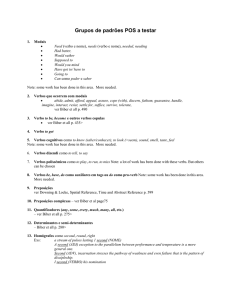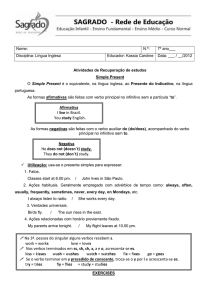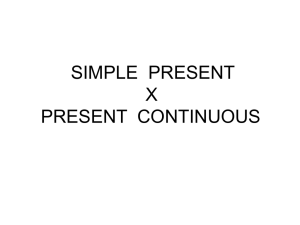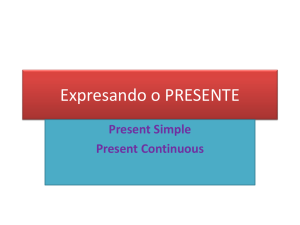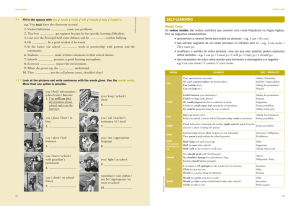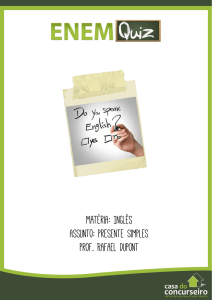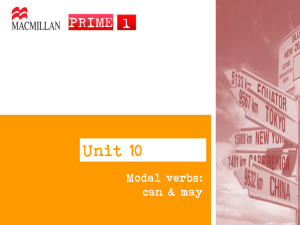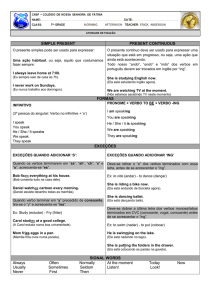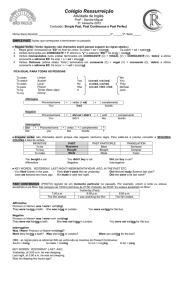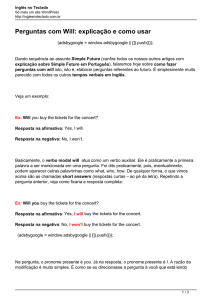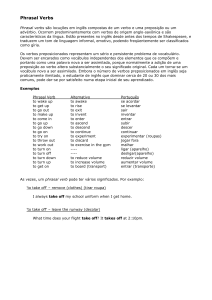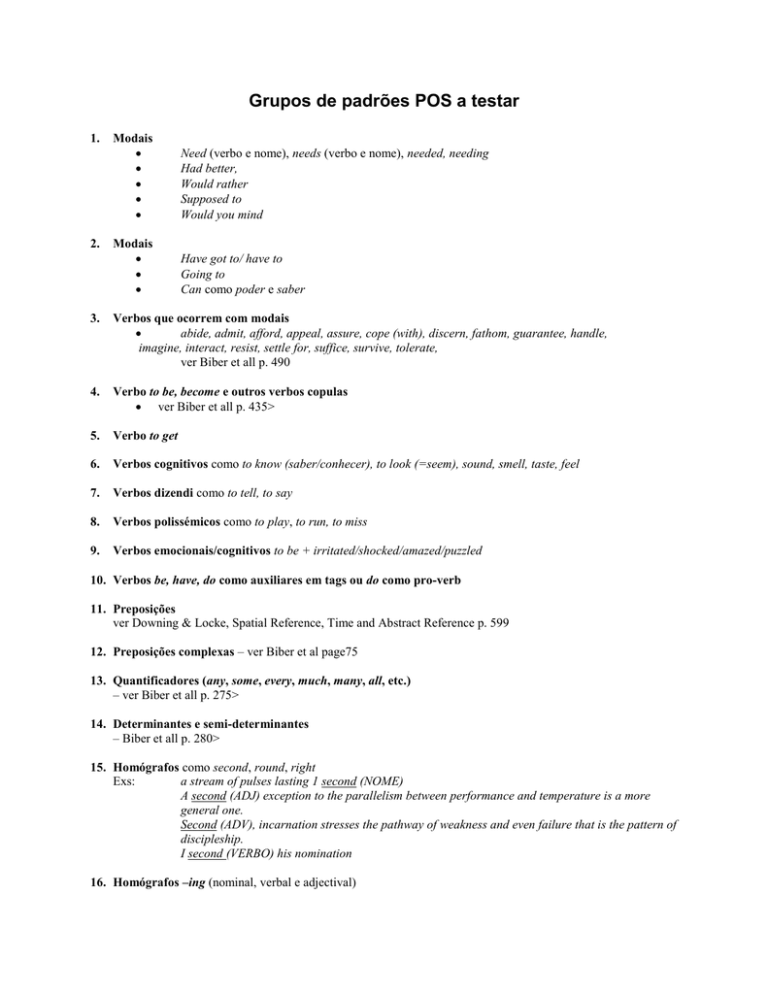
Grupos de padrões POS a testar
1.
2.
Modais
Need (verbo e nome), needs (verbo e nome), needed, needing
Had better,
Would rather
Supposed to
Would you mind
Modais
Have got to/ have to
Going to
Can como poder e saber
3.
Verbos que ocorrem com modais
abide, admit, afford, appeal, assure, cope (with), discern, fathom, guarantee, handle,
imagine, interact, resist, settle for, suffice, survive, tolerate,
ver Biber et all p. 490
4.
Verbo to be, become e outros verbos copulas
ver Biber et all p. 435>
5.
Verbo to get
6.
Verbos cognitivos como to know (saber/conhecer), to look (=seem), sound, smell, taste, feel
7.
Verbos dizendi como to tell, to say
8.
Verbos polissémicos como to play, to run, to miss
9.
Verbos emocionais/cognitivos to be + irritated/shocked/amazed/puzzled
10. Verbos be, have, do como auxiliares em tags ou do como pro-verb
11. Preposições
ver Downing & Locke, Spatial Reference, Time and Abstract Reference p. 599
12. Preposições complexas – ver Biber et al page75
13. Quantificadores (any, some, every, much, many, all, etc.)
– ver Biber et all p. 275>
14. Determinantes e semi-determinantes
– Biber et all p. 280>
15. Homógrafos como second, round, right
Exs:
a stream of pulses lasting 1 second (NOME)
A second (ADJ) exception to the parallelism between performance and temperature is a more
general one.
Second (ADV), incarnation stresses the pathway of weakness and even failure that is the pattern of
discipleship.
I second (VERBO) his nomination
16. Homógrafos –ing (nominal, verbal e adjectival)
in the hope of getting a job building (VERBO) our railway bridge
The building (ADJ) industry has today an appreciably larger number of men at work
it is quite capable of spreading from one building to another
17. Homógrafos -ed (verbal e adjectival)
-ED simple past (pretérito perfeito)
The program generated files
–ED past participle (particípio passado)
Family killed in fire
–ED passive (passiva)
The family was killed in the fire.
–ED adjective (adjectivo)
generated item
18. Comparativos e Superlativos (most)
19. Pronomes nas suas diferentes funções: sujeito, objecto, etc.
20. Construções Wh21. There + be, it + (seems) that
22. Nomes no plural (em início de frase)
23. SNs longos com vários adjectivos, etc.
24. Estruturas do tipo “sing the baby to sleep”, “to have a look/sleep”, etc.
25. Advérbios ever, often, much, still, yet, already, then e outros
26. Homógrafos advérbio-adjectivo como hard, long, direct, late, clean
ver Downing & Locke, p. 562
27. Homógrafos advérbio-preposição como above, across, abroad, along
ver Downing & Locke, p. 564
28. Estruturas V+Vinf

